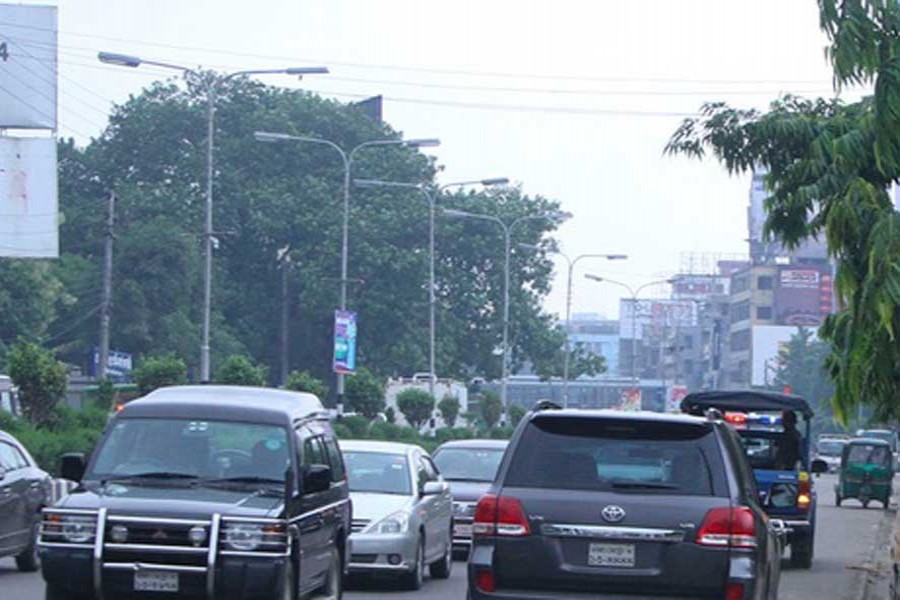Expensive projects like flyovers and widening of roads are of no use in resolving the city's chaotic traffic snarl. Over-passes and under-passes are also failing to deliver the desired result. Nobody knows when the proposed metro-rail project will be implemented for giving relief to the citizenry.
A huge amount of money has already been invested in building 'unplanned' infrastructures that include flyovers and roads. Plans of roads and flyovers are being changed frequently and budgets are being revised upward very often. The initial budgets for such projects are having substantial raise every year. At the end, they get so inflated that became costliest in the world.
Major decisions and actions of the country's policymakers to ease traffic jam have so far failed to bring any change in the city's chaotic traffic system due to a high degree of 'politicisation'. Severe jam both at the entry and exit points demonstrates that the flyovers are failing to solve the traffic chaos.
Although 80 per cent of 30 million trips, according to reports, are generated through bus and non-motorised vehicles, the government is yet to do anything to introduce an efficient bus system in the city. Such service presupposes free footpaths and smooth pedestrian movement.
What is alarming is that the government is now considering introducing a separate lane for the very important persons (VIPs). According to the proposal, a separate lane can be created as the vehicles carrying VIPs very often take the wrong sides of the road, creating traffic chaos. Emergency services also need separate lanes as patients sometimes die in the ambulances. Fire service and police can also use the dedicated lane.
Currently, more vehicles are plying on the city roads compared to their actual capacity. City roads will get more clogged if such a lane is created. Besides, such a proposal comes at a time when the city's traffic congestion is getting worse day by day.
The government has, in fact, taken some steps to control traffic jam during the last few years, but no significant progress was seen due mainly to the increasing number of people and vehicles. More than 0.1 million vehicles, mostly private, hit the city streets every year, but the space in roads remains almost the same, creating huge pressure on the existing ones.
The number of vehicles has doubled in just seven years since 2010. Some 114,271 vehicles were registered in the first 10 months of last year, while the number was 110,520 in 2016.
In the last 10 years, average traffic speed in Dhaka dropped from 21 kmph to 7.0 kmph, which is slightly above the average walking speed. The speed may drop to 4.0 kmph by 2035, slower than walking speed. Congestion in the city eats up 3.2 million work hours per day. This costs the economy billions of dollars every year.
There is no denying that many densely populated cities in the developed countries have separate lanes for the vehicles carrying service providers, law enforcers and important persons. But the point is that Dhaka metropolis can't be compared with any other cities of the world due to its over-sized population and insufficient infrastructures.
Policymakers should weigh traffic-management alternatives like introducing a reliable hawker-eviction programme, restricted zones for both pedestrians and vehicles in some areas, by-lanes, localised rickshaws and long-term low-cost services as well as making efforts to ensure maximum utilisation of the streets by the city corporations.
Making a separate lane is, in fact, not possible without widening the roads. Removal of many structures is required for that. Many things including the present condition of the city roads and what has to be done should be taken into consideration first.
The Strategic Transport Plan (STP) and the revised STP had earlier recommended dedicated lane for public transports like metro rail and bus rapid transit. Emergency services like ambulance and fire service vehicles can co-ply through the dedicated lane. It is yet to be implemented.
If a separate lane is constructed for public transports, there will be no space left on the roads for another dedicated lane. As such, the proposal for a dedicated lane for the VIPs and emergency services is just 'unrealistic' at this stage.


